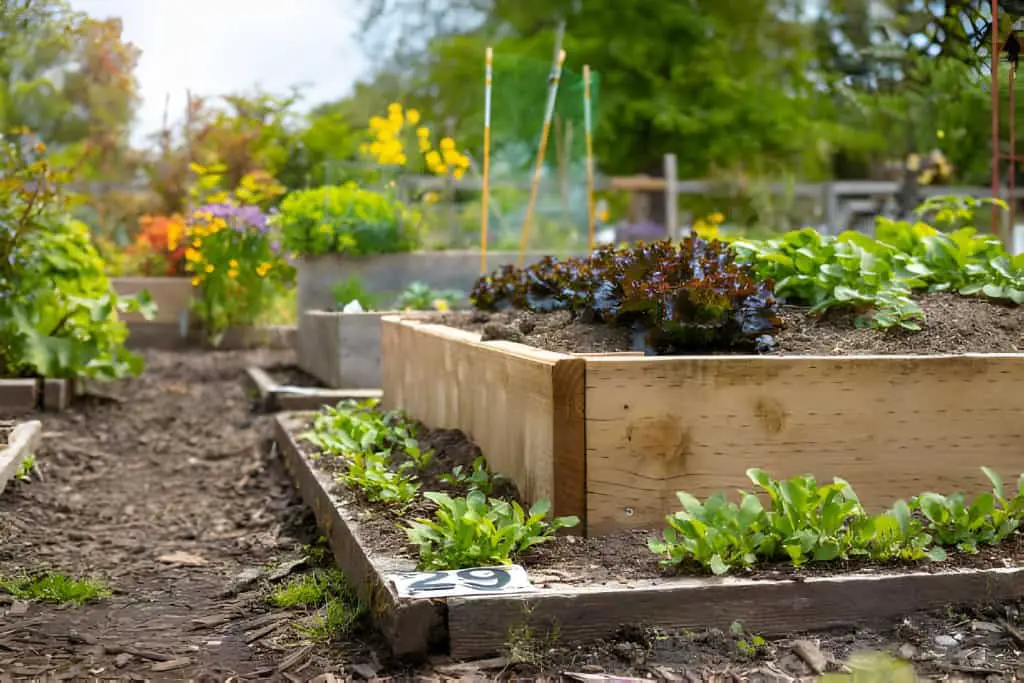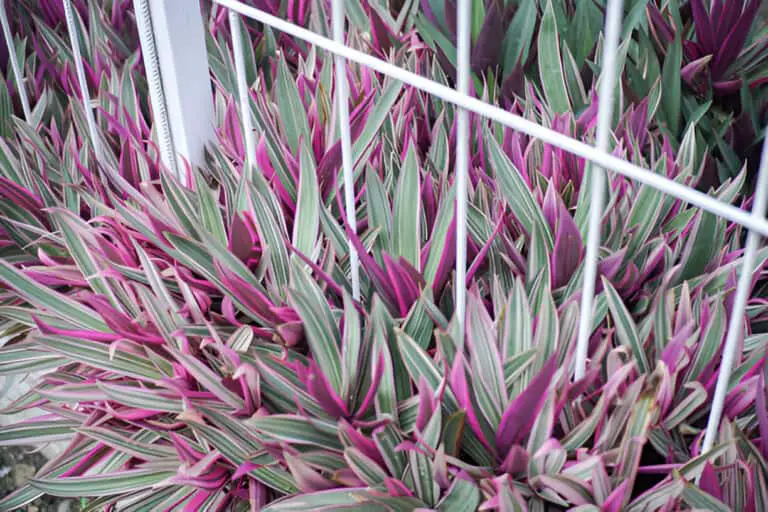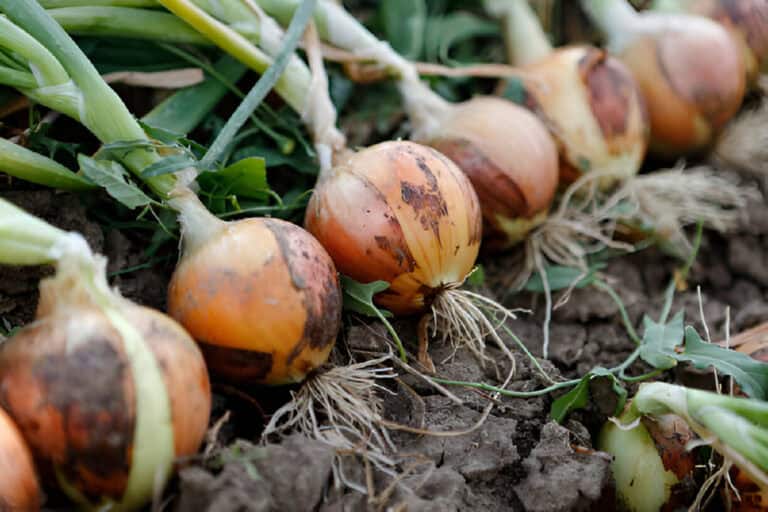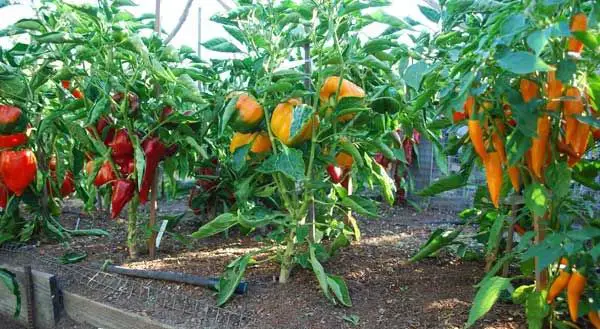What Are the Environmental Benefits of Community Gardens?

Community gardens are thriving in cities and the countryside. They transform unused spaces into vibrant, green havens. These shared plots are not just a source of fresh produce. They are also a place for social interaction. But, they are also powerful tools for sustainability.
Are you curious about the impact of community gardens on the environment? Community gardens offer many environmental benefits. They include enhancing biodiversity and reducing urban heat islands. These benefits contribute to a healthier planet.
Let’s delve into the various ways community gardens make a positive impact on the environment. Understanding these benefits will give you insights. They show how community gardens make the planet healthier and build community.
Introduction of Community Gardens
Community gardens are shared spaces where individuals or groups come together to grow fruits, vegetables, flowers, and other plants. These gardens are often in cities. They have seen a surge in popularity. More people want sustainable living and community.
People like community gardens because they provide fresh, local food. They also like the sense of community and cooperation the gardens create.
We explore the environmental benefits of community gardens. They are more than just plots of land. They are vital to ecological health and urban sustainability.
Environmental Benefits of Community Gardens

Community gardens offer big environmental benefits. They help local ecosystems and urban sustainability. Green spaces absorb carbon dioxide from the air. They help fight climate change. You can find details about the benefits below.
1. Enhancing Biodiversity
Community gardens play a crucial role in enhancing local biodiversity. By cultivating a diverse range of plants, they create habitats for various insects, birds, and other wildlife. This biodiversity is essential for ecosystem stability and resilience.
a. Promoting Native Species
They focus on planting native species. These species are well-adapted to the local climate and soil. Native plants require less water and are more resistant to pests and diseases, reducing the need for chemical interventions. Additionally, they provide food and shelter for native pollinators and other wildlife. This support the local ecosystem.
b. Attracting Pollinators
Pollinators such as bees, butterflies, and hummingbirds are vital for the reproduction of many plants. Community gardens often include flowers and plants. They attract these pollinators, fostering their populations. This is particularly important in urban areas where natural habitats are limited.
2. Reducing Urban Heat Islands
Urban areas tend to be significantly warmer than their rural counterparts, a phenomenon known as the urban heat island effect. Community gardens help mitigate this effect by introducing greenery into concrete-dominated landscapes.
a. Cooling Effects of Vegetation
Plants cool the air through evapotranspiration. In this process, plants absorb water with their roots and release it into the air through their leaves. This natural cooling effect can significantly reduce local temperatures, making urban areas more comfortable during hot weather.
b. Shaded Areas
Large shrubs and trees planted in community gardens offer shade, which lowers the amount of heat that buildings and pavements absorb. This cools the area. It also reduces the need for air conditioning. This leads to lower energy use and fewer greenhouse gas emissions.
3. Improving Air Quality
Community gardens contribute to cleaner air by absorbing pollutants and producing oxygen. Plants absorb carbon dioxide and other harmful gases through photosynthesis. They release oxygen in return. This process helps reduce the concentration of pollutants in the air, improving overall air quality.
a. Absorbing Carbon Dioxide
As plants grow, they absorb carbon dioxide, one of the primary greenhouse gases contributing to climate change. By sequestering carbon, community gardens help mitigate the effects of global warming. The more green spaces we have, the greater our capacity to absorb carbon dioxide from the atmosphere.
b. Filtering Pollutants
Plants also filter out pollutants such as nitrogen dioxide, sulfur dioxide, and particulate matter. These pollutants can have severe health impacts, especially in densely populated urban areas. Community gardens act as natural air filters, trapping and breaking down these harmful substances.
4. Reducing Stormwater Runoff
Stormwater runoff can cause significant environmental issues, including water pollution and flooding. Community gardens help manage stormwater by improving soil infiltration and reducing runoff.
a. Improved Soil Infiltration
Healthy garden soils can hold a lot of water. This lets rainwater seep into the ground instead of running off into storm drains. This reduces the risk of flooding and decreases the load on urban drainage systems.
b. Natural Filtration
Rainwater soaks into the soil. It is filtered naturally, removing contaminants before they reach waterways. This process protects rivers, lakes, and oceans from pollution. It promotes healthier aquatic ecosystems.
5. Food Security and Local Sourcing
Community gardens offer a wealth of benefits, particularly in terms of food security and local sourcing. These gardens are crucial. They provide fresh fruits and vegetables directly to participants. They also foster a sense of community and reduce reliance on commercially transported produce.
Community gardens grow food locally. They limit the harm from long-distance transportation and packaging. This harm leads to high carbon emissions. They also promote sustainable food practices.
Moreover, the emphasis on local food production enhances food security within communities. Participants have access to healthy, local food. This reduces their need for outside food that may be vulnerable to disruptions. It also helps build resilience. This is against food shortages or price swings due to external factors.
6. Promoting Sustainable Practices
Community gardens are often hubs for sustainable practices and environmental education. They encourage gardeners to use eco-friendly methods. These include composting, organic gardening, and water conservation.
a. Composting
Composting is common in community gardens. It turns kitchen scraps and garden waste into nutrient-rich compost. This reduces waste sent to landfills. It also enriches the soil and promotes healthy plant growth without chemical fertilizers.
b. Organic Gardening
Many community gardens promote organic gardening practices, avoiding synthetic pesticides and fertilizers. Organic methods support soil health. They also protect helpful insects and cut chemical runoff into waterways. By demonstrating these practices, community gardens educate participants about sustainable agriculture.
c. Water Conservation
Water is a precious resource, and community gardens often implement techniques to conserve it. These might include rainwater harvesting, mulching, and using drought-resistant plants. Such practices help reduce water consumption and promote efficient use of available resources.
7. Strengthening Community Resilience
In addition to their direct environmental benefits, community gardens strengthen community resilience. They provide local food sources. They also add green space and foster community. All of these contribute to a more sustainable and resilient society.
a. Local Food Production
Community gardens grow fresh food locally, cutting transportation needs. This cuts carbon emissions from food transport. It also ensures residents have access to affordable, healthy food.
b. Increasing Green Space
Green spaces are essential for mental and physical well-being. They provide a respite from the urban environment, offering a place for relaxation and recreation. Community gardens increase the amount of green space for residents. They make a city healthier and more livable.
c. Fostering Community Connections
Community gardens bring people together, fostering a sense of community and shared purpose. This social unity is vital. It helps build tough communities. They can respond well to environmental and social challenges.
Conclusion
Community gardens offer many environmental benefits. They enhance biodiversity and reduce urban heat islands. They also improve air quality. They promote sustainable practices, manage stormwater runoff, and strengthen community resilience. Community gardens turn unused spaces into thriving green areas. They play a crucial role in creating a greener future.
Embracing and expanding these green havens can lead to healthier communities and a healthier planet. Are you a seasoned gardener or a newcomer? Joining a community garden can be a rewarding way to help the environment and the community.






